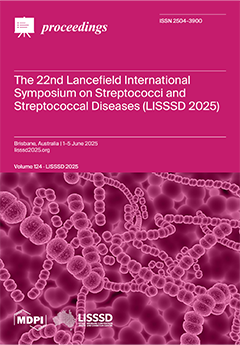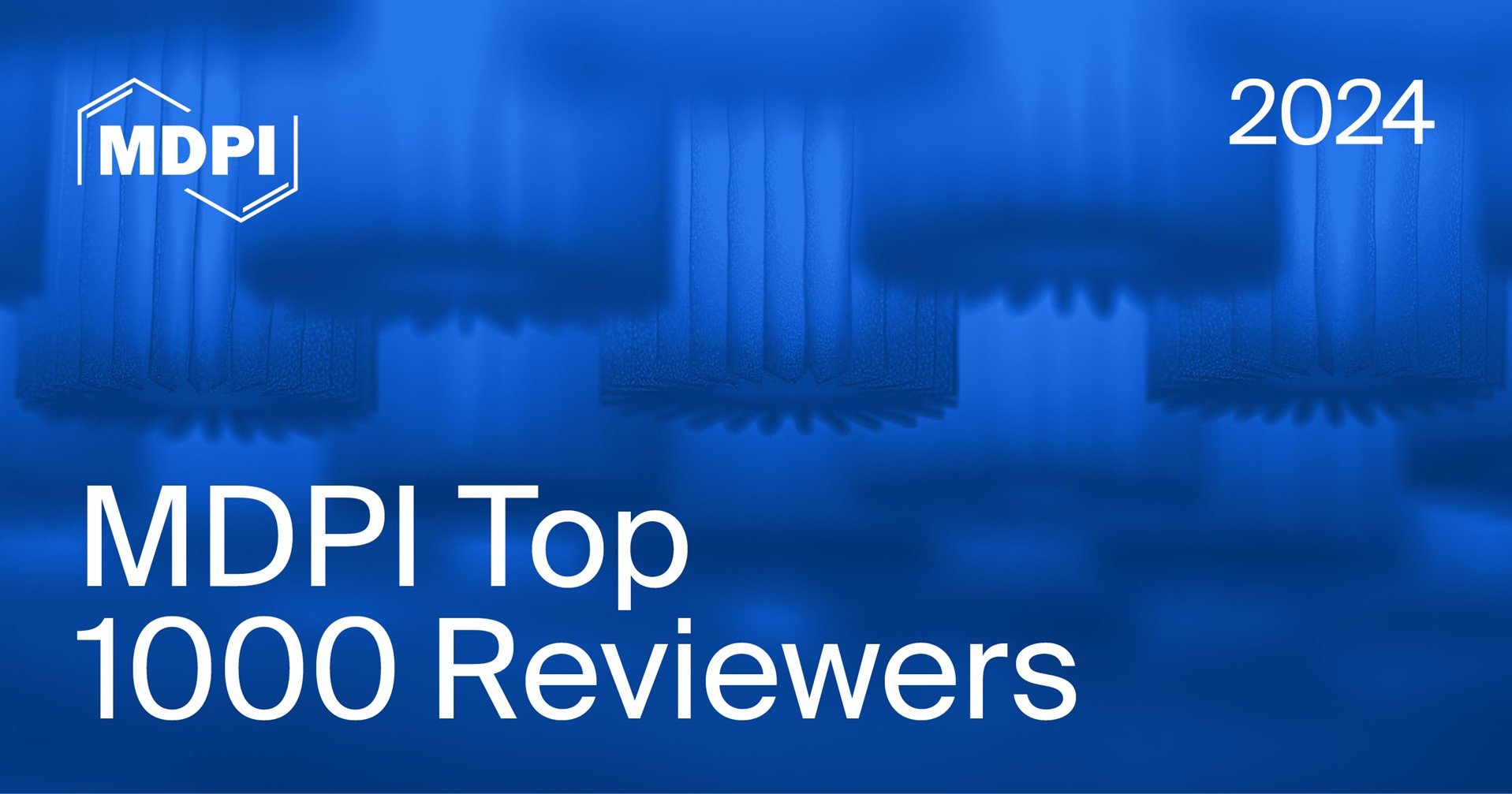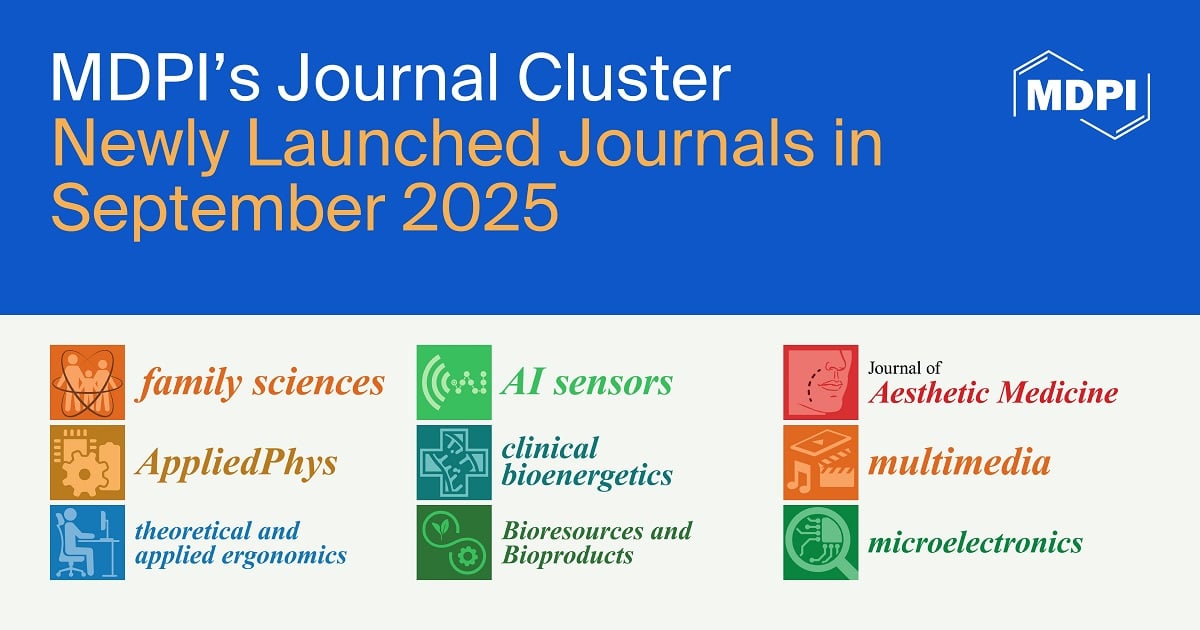Journal Description
Proceedings
Proceedings
is an open access journal dedicated to publishing findings resulting from conferences, workshops, and similar events. The conference organizers and proceedings editors are responsible for managing the peer-review process and selecting papers for conference proceedings.
Latest Articles
Bridging Stroke Pathophysiology and Therapy: A Translational Perspective
Proceedings 2025, 127(1), 30; https://doi.org/10.3390/proceedings2025127030 - 20 Oct 2025
Abstract
Stroke is a major neurological disorder and remains one of the leading causes of death and long-term disability globally [...]
Full article
(This article belongs to the Proceedings of International Conference on Interdisciplinary Approaches and Emerging Trends in Pharmaceutical Doctoral Research: Innovation and Integration)
Open AccessAbstract
Revisiting Subperiosteal Implants: A Narrative Review of the Contemporary Literature
by
Robert-Ramzi Azar, Edward-Ronald Azar, Andreea-Violeta Ardelean, Alexandra-Denisa Stoian, Georgiana Boici, Cosmin Sinescu and Meda-Lavinia Negruțiu
Proceedings 2025, 127(1), 29; https://doi.org/10.3390/proceedings2025127029 - 20 Oct 2025
Abstract
Subperiosteal implants, once a historical footnote in implant dentistry, are experiencing a revival in the digital era [...]
Full article
(This article belongs to the Proceedings of International Conference on Interdisciplinary Approaches and Emerging Trends in Pharmaceutical Doctoral Research: Innovation and Integration)
Open AccessAbstract
Contemporary Biomaterials and Clinical Performance Metrics in Direct Restorative Dentistry
by
Giorgiana-Adelina Boici, Emanuela-Lidia Petrescu, Robert-Ramzi Azar, Alexandra-Denisa Stoian, Cosmin Sinescu and Meda-Lavinia Negruțiu
Proceedings 2025, 127(1), 27; https://doi.org/10.3390/proceedings2025127027 - 20 Oct 2025
Abstract
Modern restorative dentistry relies heavily on advancements in biomaterials, which must demonstrate not only superior mechanical properties but also excellent clinical performance [...]
Full article
(This article belongs to the Proceedings of International Conference on Interdisciplinary Approaches and Emerging Trends in Pharmaceutical Doctoral Research: Innovation and Integration)
Open AccessAbstract
Antioxidant Activity of 2% G. glabra L. Hydrogels for Potential Use in Oxidative Stress-Related Skin Conditions
by
Iulia Semenescu, Ștefana Avram, Larisa Bora, Szilvia Berkó, Daliana Minda and Corina Danciu
Proceedings 2025, 127(1), 24; https://doi.org/10.3390/proceedings2025127024 - 15 Oct 2025
Abstract
Glycyrrhiza, commonly known as licorice, has been extensively studied for its many pharmacological properties, with recent research also focused on its potential dermatological applications [...]
Full article
(This article belongs to the Proceedings of International Conference on Interdisciplinary Approaches and Emerging Trends in Pharmaceutical Doctoral Research: Innovation and Integration)
Open AccessAbstract
Targeting Melanoma via Drug Repurposing: Investigating Melatonin Synergy and Melanin-Driven Resistance in 2D Cell Line Models
by
Eliza Szabo and Iulia Andreea Pinzaru
Proceedings 2025, 127(1), 26; https://doi.org/10.3390/proceedings2025127026 - 14 Oct 2025
Abstract
Melanoma is a highly aggressive form of skin cancer known for its swift acquisition of resistance to treatment, particularly therapies targeting the Mitogen-Activated Protein Kinase (MAPK) signaling cascade [...]
Full article
(This article belongs to the Proceedings of International Conference on Interdisciplinary Approaches and Emerging Trends in Pharmaceutical Doctoral Research: Innovation and Integration)
Open AccessAbstract
Praseodymium-Doped Cobalt Ferrite Nanoparticles: Novel Selective Anticancer Agents with Magnetic Modulation
by
Slavița Rotunjanu, Roxana Racoviceanu and Codruța Șoica
Proceedings 2025, 127(1), 25; https://doi.org/10.3390/proceedings2025127025 - 14 Oct 2025
Abstract
In the pursuit of multifunctional nanomaterials for oncological applications, cobalt ferrite nanoparticles doped with praseodymium (CoFe2−yPryO4, y = 0–0[...]
Full article
(This article belongs to the Proceedings of International Conference on Interdisciplinary Approaches and Emerging Trends in Pharmaceutical Doctoral Research: Innovation and Integration)
Open AccessAbstract
The Integration of Nanoparticle-Based Drug Delivery and AI-Driven Pharmacogenomics in the Treatment of Prostate Adenocarcinoma
by
Marinela Nicolescu and Iulia Pinzaru
Proceedings 2025, 127(1), 23; https://doi.org/10.3390/proceedings2025127023 - 10 Oct 2025
Abstract
Prostate adenocarcinoma remains a significant therapeutic challenge, particularly in its advanced and treatment-resistant forms [...]
Full article
(This article belongs to the Proceedings of International Conference on Interdisciplinary Approaches and Emerging Trends in Pharmaceutical Doctoral Research: Innovation and Integration)
Open AccessAbstract
Geranium robertianum L. as a Source of Bioactive Compounds: From Pharmacognostic Characterization to Biological Relevance
by
Diana Haj Ali, Larisa Bora, Ștefana Avram, Daliana Minda, Ioana Zinuca Magyari-Pavel, Adina Cata, Ioana Ienascu, Cristina Adriana Dehelean and Corina Danciu
Proceedings 2025, 127(1), 22; https://doi.org/10.3390/proceedings2025127022 - 30 Sep 2025
Abstract
Geranium robertianum L [...]
Full article
(This article belongs to the Proceedings of International Conference on Interdisciplinary Approaches and Emerging Trends in Pharmaceutical Doctoral Research: Innovation and Integration)
Open AccessProceeding Paper
Combinatorial Comparison of Trace Monoids via Their Dependence Graph Symmetries
by
Ioannis Michos and Constantinos Kourouzides
Proceedings 2025, 123(1), 8; https://doi.org/10.3390/proceedings2025123008 - 30 Sep 2025
Abstract
We ask whether there exist non-isomorphic trace monoids over a fixed alphabet that have the same average parallelism. This question is related to the bivariate generating series
We ask whether there exist non-isomorphic trace monoids over a fixed alphabet that have the same average parallelism. This question is related to the bivariate generating series
(This article belongs to the Proceedings of The 5th International Conference on Symmetry (Symmetry 2025))
►▼
Show Figures

Figure 1
Open AccessAbstract
Rational Design of Betulin-Based Hybrids as Multi-Target Inhibitors of Anti-Apoptotic BCL Proteins
by
Mihaela Čoban and Marius Mioc
Proceedings 2025, 127(1), 21; https://doi.org/10.3390/proceedings2025127021 - 28 Sep 2025
Abstract
Triterpenes such as betulin are intensively studied for their intrinsic pro-apoptotic effects in cancer, providing a privileged scaffold for anti-tumor drug design [...]
Full article
(This article belongs to the Proceedings of International Conference on Interdisciplinary Approaches and Emerging Trends in Pharmaceutical Doctoral Research: Innovation and Integration)
Open AccessAbstract
The Anti-Aging Effects of Polyphenols: The Mitochondrial Perspective
by
Tamara Maksimović, Alexandra Mioc and Codruța Șoica
Proceedings 2025, 127(1), 20; https://doi.org/10.3390/proceedings2025127020 - 27 Sep 2025
Abstract
Aging is characterized by a progressive decline in organ and cellular functions, followed by greater susceptibility to various diseases and death [...]
Full article
(This article belongs to the Proceedings of International Conference on Interdisciplinary Approaches and Emerging Trends in Pharmaceutical Doctoral Research: Innovation and Integration)
Open AccessAbstract
Drug–Drug Interactions in Outpatient Psychiatry: From Interaction Profiles to Smart Monitoring
by
Florina-Diana Goldiș, Răzvan Păiușan, Mihai Udrescu and Lucreția Udrescu
Proceedings 2025, 127(1), 18; https://doi.org/10.3390/proceedings2025127018 - 26 Sep 2025
Abstract
Objective [...]
Full article
(This article belongs to the Proceedings of International Conference on Interdisciplinary Approaches and Emerging Trends in Pharmaceutical Doctoral Research: Innovation and Integration)
Open AccessAbstract
Datura stramonium L.—The Toxicological Aspects of an Alternative Drug of Abuse
by
Dalia-Maria Horşia (Pătrașcu), Noni Ștefan Marcu, Alex-Robert Jîjie, Elena-Alina Moacă, Oana Andrada Iftode and Cristina Adriana Dehelean
Proceedings 2025, 127(1), 17; https://doi.org/10.3390/proceedings2025127017 - 26 Sep 2025
Abstract
Datura stramonium, commonly known as jimsonweed or Devil’s trumpet, belongs to the Solanaceae family and has a long history of medicinal and toxicological importance [...]
Full article
(This article belongs to the Proceedings of International Conference on Interdisciplinary Approaches and Emerging Trends in Pharmaceutical Doctoral Research: Innovation and Integration)
Open AccessAbstract
Systemic Drug–Drug Interactions in Dental Care: Patterns, Risks, and Clinical Management Strategies
by
Daiana Colibășanu, Sebastian Mihai Ardelean, Florina-Diana Goldiș, Maria-Medana Drăgoi, Sabina-Oana Vasii, Tamara Maksimović, Șerban Colibășanu, Codruța Șoica and Lucreția Udrescu
Proceedings 2025, 127(1), 16; https://doi.org/10.3390/proceedings2025127016 - 26 Sep 2025
Abstract
In the context of an aging population and the increasing number of patients receiving multiple medications, modern dental practice faces the growing challenge of drug–drug interactions (DDIs) [...]
Full article
(This article belongs to the Proceedings of International Conference on Interdisciplinary Approaches and Emerging Trends in Pharmaceutical Doctoral Research: Innovation and Integration)
Open AccessEditorial
Statement of Peer Review
by
Alessandra Napolitano
Proceedings 2025, 119(1), 13; https://doi.org/10.3390/proceedings2025119013 - 26 Sep 2025
Abstract
In submitting conference proceedings to Proceedings, the volume editors of the proceedings certify to the publisher that all papers published in this volume have been subjected to peer review administered by the volume editors [...]
Full article
(This article belongs to the Proceedings of The 2nd International Electronic Conference on Antioxidants)
Open AccessProceeding Paper
A Comparison of the Effect of Language on High Level Information Processes in Humans and Linguistically Mature Generative AI
by
Daniel Boyd
Proceedings 2025, 126(1), 11; https://doi.org/10.3390/proceedings2025126011 - 26 Sep 2025
Abstract
Recent advances in Large Language Models (LLMs) have reignited discussions concerning the similarities and differences between human and machine intelligence. This article approaches such questions from the viewpoint of the overarching explanation for biological and technological information systems provided by Emergent Information Theory.
[...] Read more.
Recent advances in Large Language Models (LLMs) have reignited discussions concerning the similarities and differences between human and machine intelligence. This article approaches such questions from the viewpoint of the overarching explanation for biological and technological information systems provided by Emergent Information Theory. Particular attention is given to the role of language in the construction of high-level emergent informational processes and entities and to its use in conscious reporting. This leads to the conclusion that language may also provide a window into the inner workings of these systems that can provide evidence relevant to these discussions.
Full article
Open AccessAbstract
Study on In Vitro Release and Permeation of Oxymetazoline Hydrochloride from Topical Cream and Hydrogel Vehicles
by
Ştefania-Adriana Colgiu, Ana-Maria Cotan, Ioana-Viorica Olariu, Vicenţiu Vlaia, Georgeta Coneac and Lavinia Vlaia
Proceedings 2025, 127(1), 19; https://doi.org/10.3390/proceedings2025127019 - 25 Sep 2025
Abstract
Background: [...]
Full article
(This article belongs to the Proceedings of International Conference on Interdisciplinary Approaches and Emerging Trends in Pharmaceutical Doctoral Research: Innovation and Integration)
Open AccessAbstract
Digoxin as a Potential Anticancer Agent in Melanoma Treatment
by
Ștefania-Irina Dumitrel, Andreea Cristea, Andreea Smeu, Sergio Liga and Cristina-Adriana Dehelean
Proceedings 2025, 127(1), 15; https://doi.org/10.3390/proceedings2025127015 - 25 Sep 2025
Abstract
Cutaneous melanoma (CM) is one of the most aggressive and lethal forms of skin cancer, characterized by a high rate of proliferation, marked local invasion, and high metastatic potential [...]
Full article
(This article belongs to the Proceedings of International Conference on Interdisciplinary Approaches and Emerging Trends in Pharmaceutical Doctoral Research: Innovation and Integration)
Open AccessAbstract
Computational Exploration of Betulinic Acid Hybrids as Dual BCL-2/BCL-XL Inhibitors
by
Elisabeta P. Atyim, Marius Mioc and Codruța Șoica
Proceedings 2025, 127(1), 14; https://doi.org/10.3390/proceedings2025127014 - 25 Sep 2025
Abstract
Betulinic acid (BA), a lupane-type triterpene widely studied for its selective cytotoxicity against malignancies [...]
Full article
(This article belongs to the Proceedings of International Conference on Interdisciplinary Approaches and Emerging Trends in Pharmaceutical Doctoral Research: Innovation and Integration)
Open AccessAbstract
Evaluation of the Anticancer Properties of Cedrus atlantica Essential Oil on Skin and Colorectal Cancer Cell
by
Oana-Maria Eșanu, Codruța Șoica and Marius Mioc
Proceedings 2025, 127(1), 13; https://doi.org/10.3390/proceedings2025127013 - 24 Sep 2025
Abstract
Skin and colorectal cancers are among the most pressing global health concerns, highlighting the urgent need for the development of novel therapeutic strategies [...]
Full article
(This article belongs to the Proceedings of International Conference on Interdisciplinary Approaches and Emerging Trends in Pharmaceutical Doctoral Research: Innovation and Integration)
Highly Accessed Articles
Latest Books
E-Mail Alert
News
Topics













